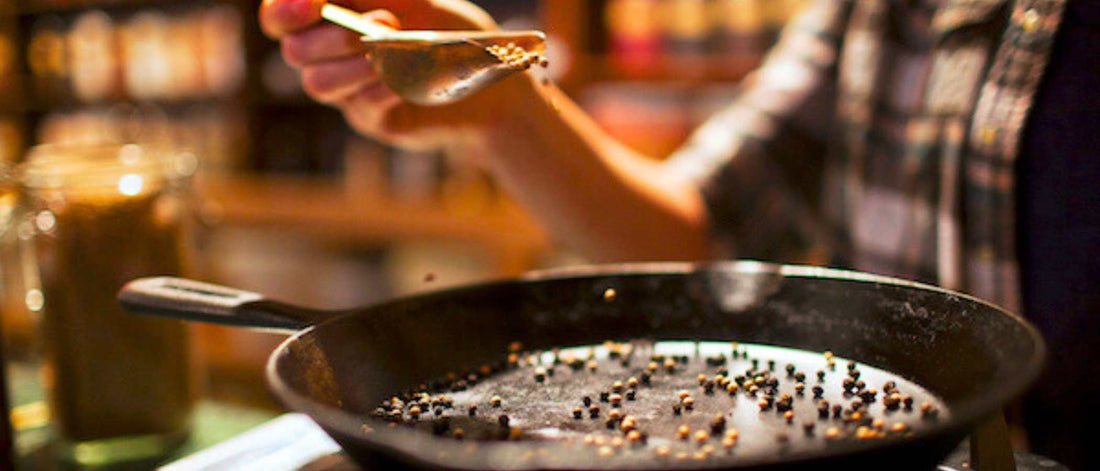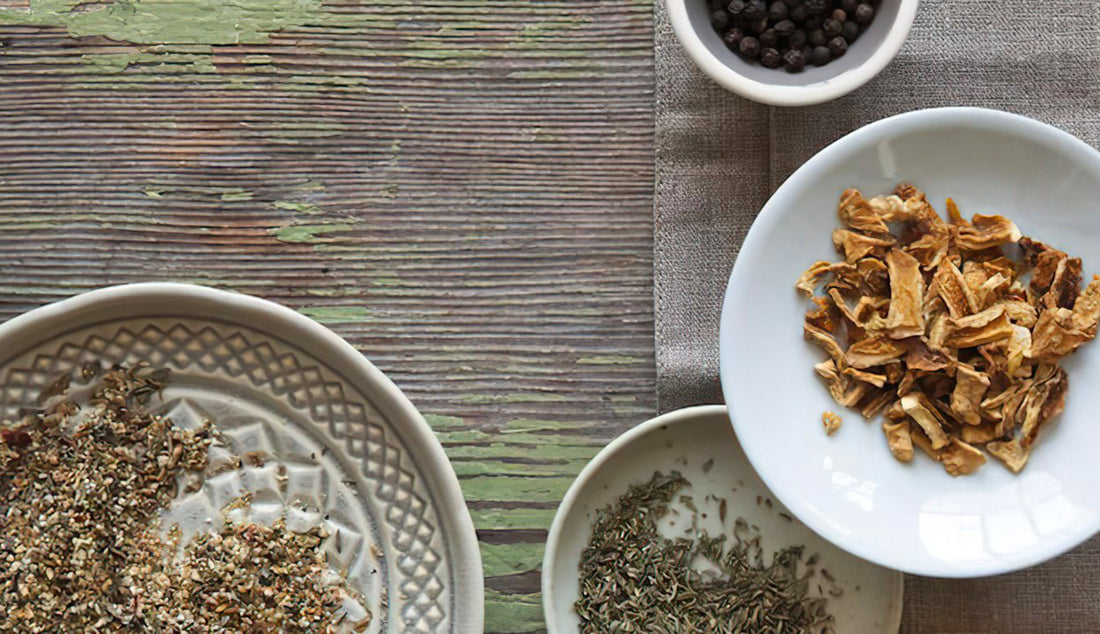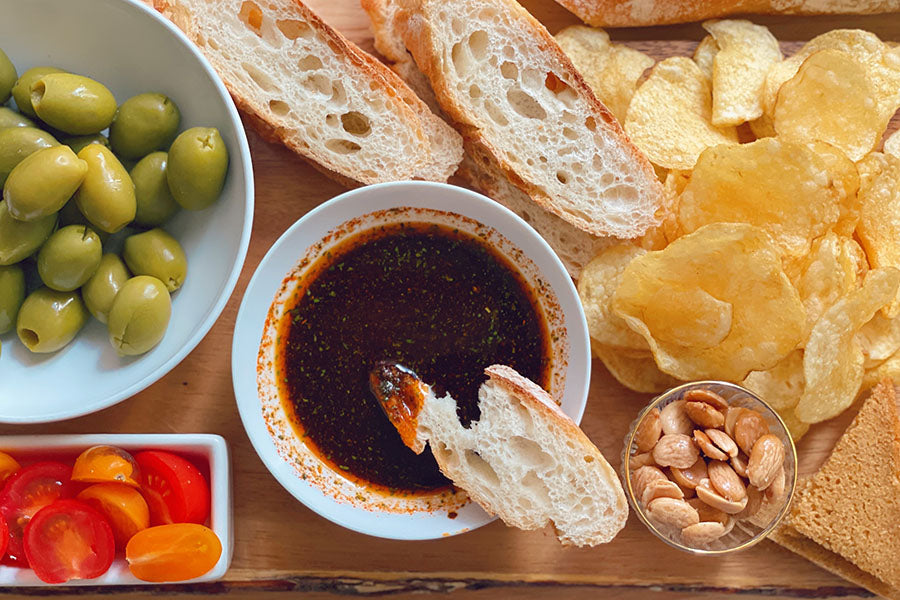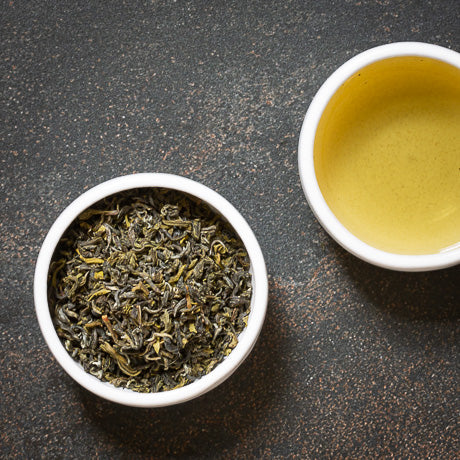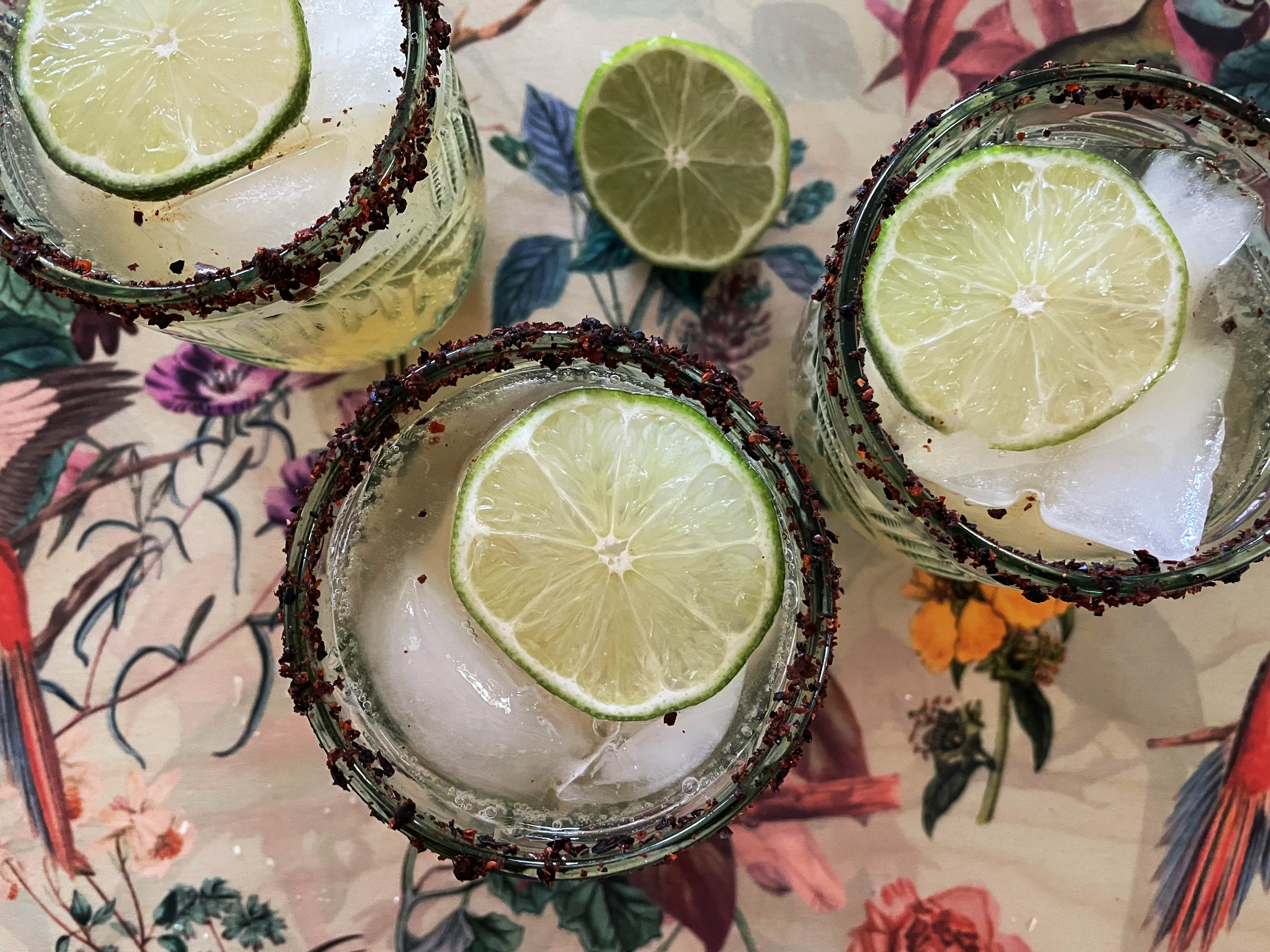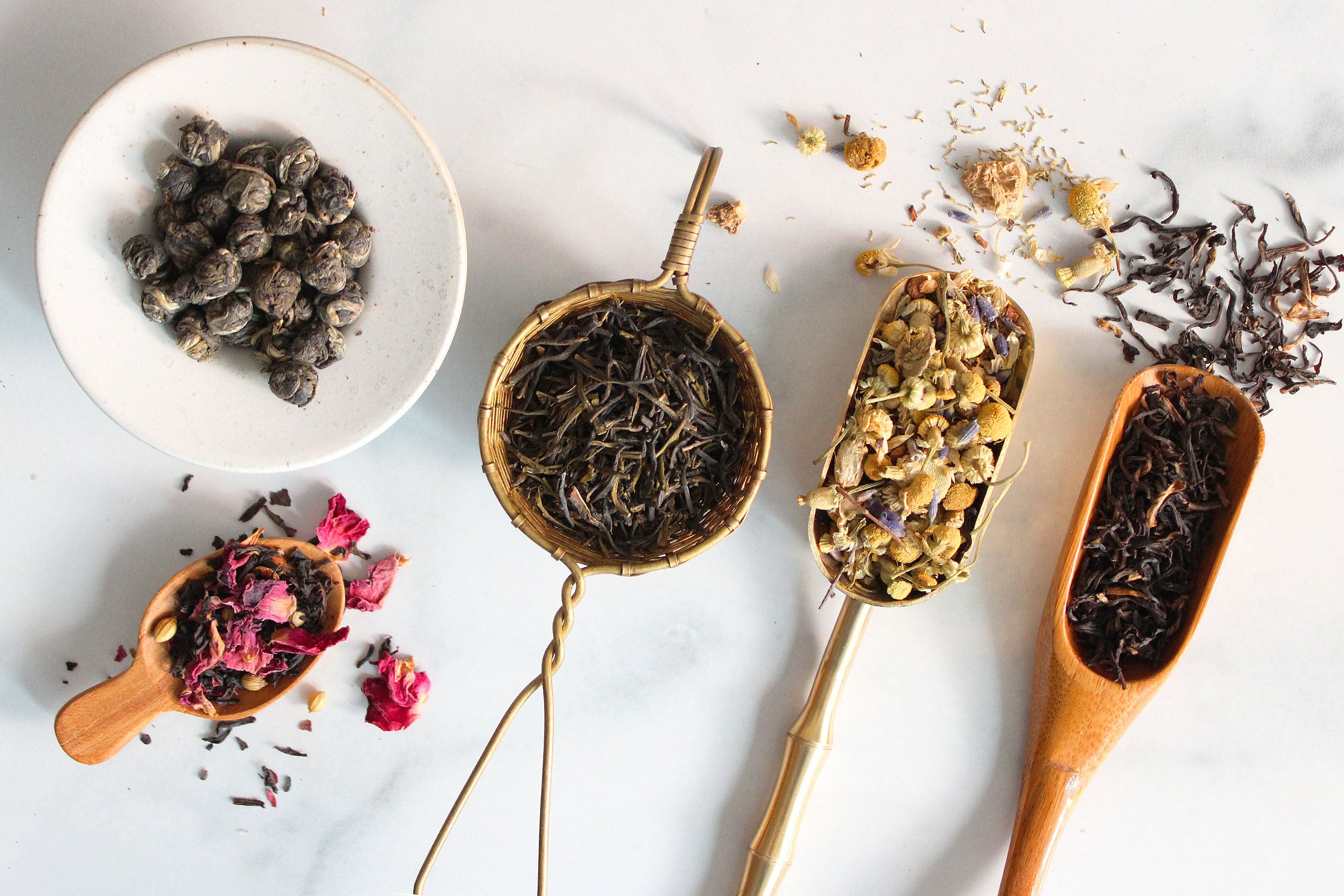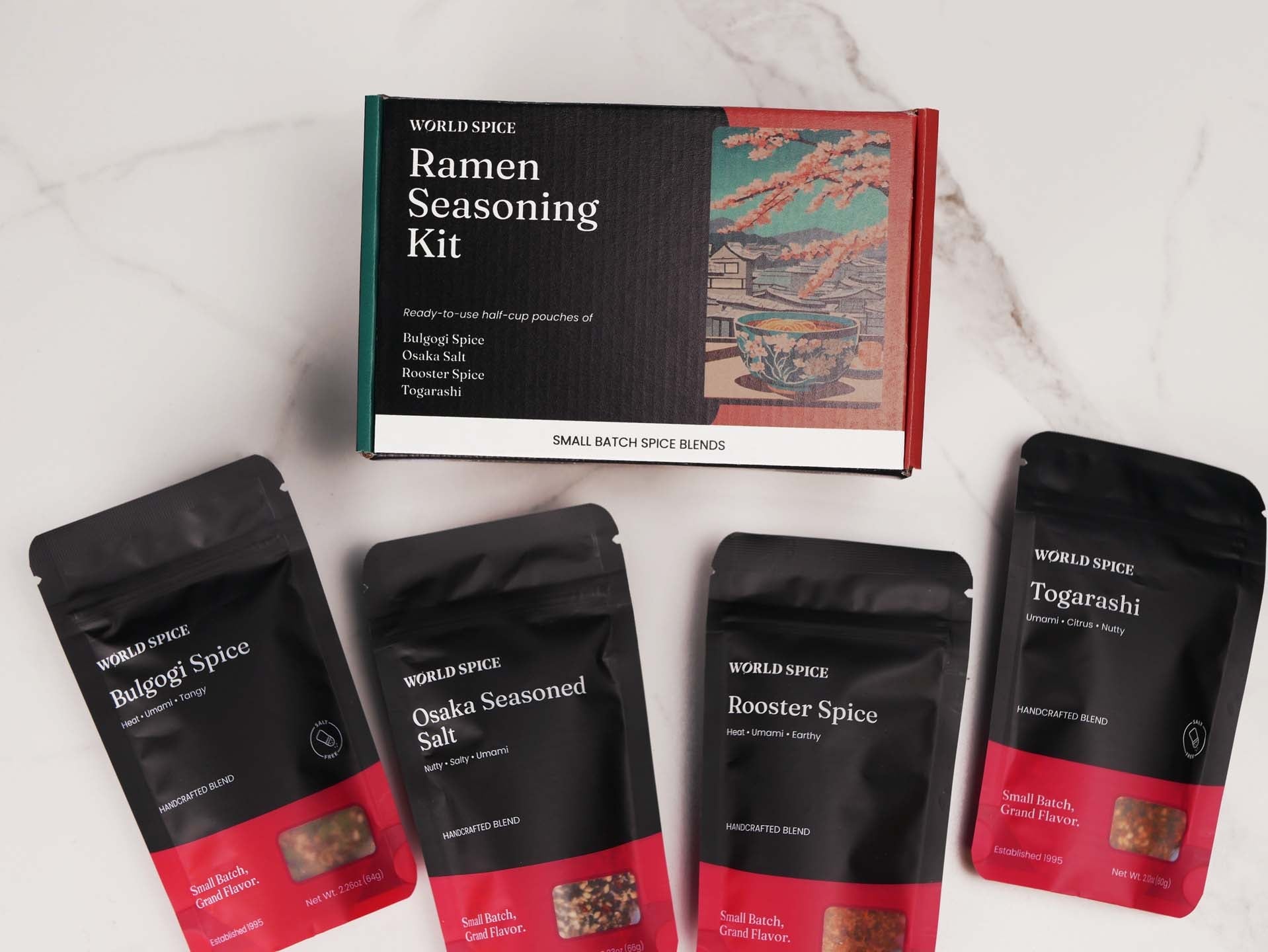Cooking Guides & Tips
💌 Spicy Love Letters
Happy Valentine's Day from all of us at World Spice. We love spices every day, but for Valentine's Day, we really wanted to show it. Everyone on our team has a favorite, and we’ve got the prose (and poetry!) to prove it.
Learn moreBrining Poultry: Wet & Dry Methods
What is brining? Brining, whether using the wet or dry method, is a key technique to maintain meat's juiciness and freshness during cooking. The wet method involves immersing meat in a saltwater solution, enhanced with spices and herbs like our Northwest Forest Brine. In contrast, the dry method, a more recent approach, utilizes dry ingredients, primarily salt, to draw out surface moisture and enhance flavor and tenderness by reabsorbing both the moisture and seasoning. How to brine The Wet MethodYou’ll start by adding one 8oz package of salt (or our Northwest Forest Brine) to 2 quarts of water in a large pot and bring the solution to a rolling boil. Stir to dissolve the salt and sugar, take off the heat, then let sit for 5-10 minutes. Add another 2 quarts of cold water and wait for the brine to return to room temperature (this is important to avoid accidentally cooking your turkey in the hot brine). Place the turkey and the brine into a large container or food grade plastic bag and keep in the refrigerator for up to 24 hours before cooking. The turkey will absorb the flavors, resulting in a deliciously seasoned and juicy bird when cooked. Dry MethodCarefully rub salt or the Northwest Forest Brine all over the turkey, including under the skin and inside the cavity. Then place the turkey in the refrigerator in a large container or food safe plastic bag for one hour per pound of turkey. Rinse off the brine and be sure to pat dry the turkey for crispy skin. Pro tip: Get a brining bag for your turkey online or at your local grocery store. It simplifies fridge storage. Once you incorporate brining into your holiday routine, it simply adds to the bustle and flavor of the season, along with a dose of stress reduction because your turkey will not be dry. Bonus! This favorite recipe of ours is perfect for a lightly sweet brine.
Learn moreHow to Toast Spices
We have lots of tips and tricks for getting the most from your spices, but few techniques build flavor depth quite like toasting. The process is almost alchemical: a handful of seeds, pods, or barks meet a hot pan, and within seconds, the kitchen is filled with rich, nutty, deeply aromatic notes.Many of our favorite blends, like Kashmiri Garam Masala and Tabil, are crafted with ingredients we toast right here in our warehouse. Our Toast-Worthy Selects Clockwise from top right, Star Anise, Tellicherry Black Peppercorn, Fennel Seed, Pequin, Indian Coriander Seed, and Black Sesame Seed. How to Toast Spices at Home Start with a heavy-bottomed skillet like cast iron, making sure it's large enough to spread all your spices out in a single layer. Set it over medium heat — no oil needed — and warm the pan for a few minutes.Once it's warm, add in your whole spices, keeping them in a single layer.Keep your spices moving, stirring or tossing them frequently. You'll notice a shift in as little as 30-60 seconds as the kitchen fills with fragrance. On lighter spices you'll notice a color shift, but on darker ones you may not see a big difference. Smaller seeds like sesame and mustard might pop and jump around to announce they’re ready!Once toasted to perfection, transfer the spices immediately to a heatproof dish to avoid burning, and cool.From there, grind them into a fragrant powder, toss them whole into a simmering pot, or fold them into your favorite spice blend. Seeds, barks, pods, and roots all benefit from a gentle toasting.For inspiration, check out this list. Quick Tips The longer you toast, the deeper the flavor — but like toast, once they’re burnt, there’s no going back. If you see or smell smoke, the spices are on the edge and should come off the heat immediately. Toasting chiles? Go easy. Make sure your space is well-ventilated and toast lightly. The smoke from heavily toasted chiles can be surprisingly caustic. Mixing spices? Size matters. If you’re toasting a few different spices together, choose ones of similar size so they toast at the same rate. Toast whole — not ground — spices. Ground spices tend to toast very quickly and can burn easily. If you want to enhance ground spices, choose a technique called "blooming." When making a dish, add oil, butter, or ghee to your heated pan and then stir in your spices. Let them warm in the hot oil for 30 seconds to a minute before adding your other ingredients. This is a much gentler way to get those toasted flavors without burning the ground spices.
Learn moreWhy We Only Carry Loose Leaf Tea
As the days get cooler, there's nothing better than wrapping your hands around a warm cup of tea. If you're about to stock up for cooler weather, know this: Once you try our teas, you'll taste the difference... Freshness and Quality We source minimally processed tea, ensuring that all of those wonderful natural oils, flavors, and aromas remain intact. Unlike tea bags, which often contain broken leaves or dust and are usually good for just one brew, loose leaf tea's whole leaves fully expand, allowing for multiple infusions. Plus, loose leaf tea is kinder to the planet—no individual bags, less waste🌿✨ Make it YOUR Cup of Tea With loose leaf tea, you’re in control. Want a strong cup? Just add a bit more tea. Prefer it lighter? Use less tea and steep it for a shorter time. Did you know? Whole leaves can be steeped several times, with each infusion releasing different layers of flavor. In fact, many tea lovers believe that the second or third steeping reveals the tea’s finest nuances. This means you're getting a great value for your money, as each pot offers a range of flavors and many cups of joy. Let’s make every cup count. Ready to brew? Check out our favorite brewing wares! 🛍️
Learn moreFrozen Tea Treats 🧊🍹
Tea lovers, rejoice! While a steaming cup of tea is perfect for cozy moments, there’s a world of cool, refreshing tea treats waiting to be explored. This summer, beat the heat with some creative and delicious frozen tea delights. From tea pops to slushies, these treats are sure to inspire you to think outside the teapot. Frozen Tea Ice Cubes Frozen tea ice cubes are a versatile and chic way to keep your beverages cold without watering them down. They’re perfect for iced tea, lemonade, or even cocktails. Ingredients: Your favorite brewed tea Fresh herbs, fruit, or edible flowers (optional) Instructions: Brew your tea and let it cool. Pour the tea into ice cube trays. For an extra touch of elegance, add a small piece of fruit, herb, or edible flower to each compartment. Freeze until solid. Use the tea ice cubes in your drinks to keep them cool and flavorful. Tea Slushie Turn your iced tea into the best slushie with just a few simple steps. Ingredients: Strongly brewed iced tea Sweetener to taste Ice Fresh fruit (optional) Instructions: Brew a strong batch of iced tea and let it cool completely. Sweeten the tea to your preference. In a blender, combine the cooled tea with a generous amount of ice. For added flavor and texture, you can also add fresh fruit like berries or peaches. Blend until you achieve a slushie consistency. Pour into a glass and enjoy immediately! Tea Pops Tea pops are a fun and refreshing way to enjoy your favorite tea flavors. They are easy to make and perfect for a hot day. Ingredients: Your favorite brewed tea (green tea, herbal tea, chai, etc.) Sweetener (honey, agave, sugar) to taste Fresh fruit or herbs (optional) Instructions: Brew a strong batch of your favorite tea and let it cool. Sweeten the tea to your taste. You can also add milk, fresh fruit slices, or herbs like mint or basil for an extra flavor boost. Pour the tea into popsicle molds or dixie cups. Freeze for at least 4 hours or until solid (if using dixie cups, insert popsicle sticks after about two hours). Enjoy your tea pops straight from the freezer! Looking for tea pop inspiration? Check out these recipes: Tea can be so much more than a hot beverage. These frozen tea treats are not only refreshing but also a fantastic way to enjoy your favorite tea flavors in a whole new form. And remember, these treats are highly customizable! Add a splash of juice, a twist of citrus, or a handful of your favorite berries to create something truly unique. So, grab your favorite teas, get creative, and have some fun.
Learn moreHow to Make a Vinaigrette
Making your own dressing at home is not only simple but also allows you to tailor the flavors to your liking. Today, we're diving into the delightful world of vinaigrettes, the unsung heroes of salads everywhere. First, let's explore the basic vinaigrette recipe. Basic Vinaigrette Recipe The classic vinaigrette is a simple blend of oil and vinegar, typically in a 3:1 ratio. Here's a simple recipe to get you started: Ingredients: 3 parts extra virgin olive oil 1 part vinegar (balsamic, red wine, or apple cider vinegar) 1 teaspoon Dijon mustard 1 clove garlic, minced Salt and pepper to taste Instructions: In a small bowl, whisk together the vinegar, Dijon mustard, minced garlic, salt, and pepper. Slowly drizzle in the olive oil while continuously whisking until all the oil is incorporated. Taste and adjust seasoning as needed. Get Spicy Once you’ve mastered the basic recipe, get creative with your flavors. Spice blends like Lemon Herb Pepper and El Greco work great in vinaigrettes, and you can use Nigella Caesar and Ranch this way too. Just add a teaspoon of your favorite spice or blend to the basic recipe. Here are some ideas for flavor enhancing add-ins: Ranch Seasoning and plain Greek yogurt. Lemon Herb Pepper and lemon zest. El Greco and minced olives. Final Tips Experiment with Oils and Vinegars: Don't be afraid to mix up your oils and vinegars. Try using walnut oil, sesame oil, or flavored vinegars for a unique twist. Sweeten It Up: A touch of honey, maple syrup, or agave can balance the acidity and add depth to your vinaigrette. Storage: Store your homemade vinaigrette in a sealed container in the refrigerator for up to a week. Shake well before each use. Making your own vinaigrette is a great way to enhance your salads and showcase your culinary creativity. Stick to the classic recipe or spice it up; your taste buds are in for a treat. Enjoy experimenting and happy dressing!
Learn moreHow to Make a Rub
A quick 101 on what rubs are, how to use them, and even how to make your own!
Learn moreHow to Use - Montreal Steak & Chop
Quick and Easy Just before cooking steaks, pork chops, or roasts, sprinkle all sides of your protein with Montreal Steak & Chop. Pat the spice blend in firmly with your hands to make sure it sticks and creates an even coating. Cook as usual. Extra Time, Extra Flavor If you are a planner, use Montreal Steak & Chop to make an overnight marinade. Here’s a simple recipe to try: ½ cup olive oil ¼ cup soy sauce 2 cloves garlic, chopped or grated 2 Tbs Montreal Steak & Chop Mix ingredients together, add your protein, and leave it to hang out and get delicious in the fridge for at least a half hour and ideally overnight. Get Creative Despite its name, Montreal Steak & Chop has so many more uses than seasoning big cuts of meat. Try it in these non-traditional pairings: Add to a pot of hearty greens like chard, kale, or collards Mix with breadcrumbs for topping casseroles or breading chicken or fish Sprinkle in chunky summer salads featuring beans or chickpeas
Learn moreFloral Teas 101
Here's to embracing the essence of Spring! Floral foods and drinks are nothing new, and in fact flowers have been a staple of pantries from grandma’s house to royal kitchens around the world for millennia. All flowers have a flavor that we call floral, but every flower also has a unique flavor all its own. So, yes, flowers taste like flowers, but they all taste a little bit different. Here are some of our favorites: Chamomile (Europe and North Africa): Mild herbal and apple notes, often used for its soothing and calming flavor in teas and baked goods. Lavender (Mediterranean region): Lavender flowers are infused to make a fragrant tea with hints of mint and pine. Often turned into a simple syrup for cocktails, coffee and lemon desserts. Rose (Middle East and Asia): Rose petals are brewed into a delicate and aromatic tea with sweet undertones, frequently used to add a perfumed essence to desserts, beverages, and jams. Hibiscus (Africa, Caribbean, Asia and in Latin America): Brews a shockingly vibrant red tea with a tart and fruity flavor, often used as a natural food coloring and to infuse tangy notes in fruity desserts. Chrysanthemum (China and East Asia): Chrysanthemum flowers produce a light and grassy tea with a slightly sweet taste, often paired with citrus. Elderflower (Europe): Delicate and aromatic honey and pear notes. The tea is commonly used in cocktails, syrups, and custards.
Learn more



